The Journey to Data Analytics Maturity
The Journey to Data Analytics Maturity
Delivering better constituent services begins and ends with data. Whether government leaders are fighting the opioid crisis or helping college students prepare for the job market, data is a critical component that helps government agencies make better decisions that positively impact people’s lives.
But raw data in itself poses no real benefit to an agency. Call it the technological equivalent of white noise; it’s comforting to know that it’s there, but it doesn’t truly serve a purpose until it is made actionable through analytics.
Too often, agencies only look at enterprise analytics from a technology perspective. They consider the initial purchase of a technology solution to be their enterprise analytics initiative. In fact, purchasing technology is just the beginning. Your analytics program will only flourish if you develop a holistic approach. Voyatek’s most successful partners are public servants who are committed to:
- Reimagining processes: When you use information more effectively, you’ll streamline processes and drive and innovation at the enterprise level.
- Enhancing constituent services – Analytics deliver the insights you need to maximize the impact of your programs and policies and better serve your constituents.
- Reducing costs and improving efficiencies: Timely, accurate data and advanced analytics capabilities will help you identify bottlenecks and improve resource allocation.
- Making data-driven decisions possible: Transform operations when you define, track and share data insights across previously siloed departments or teams.
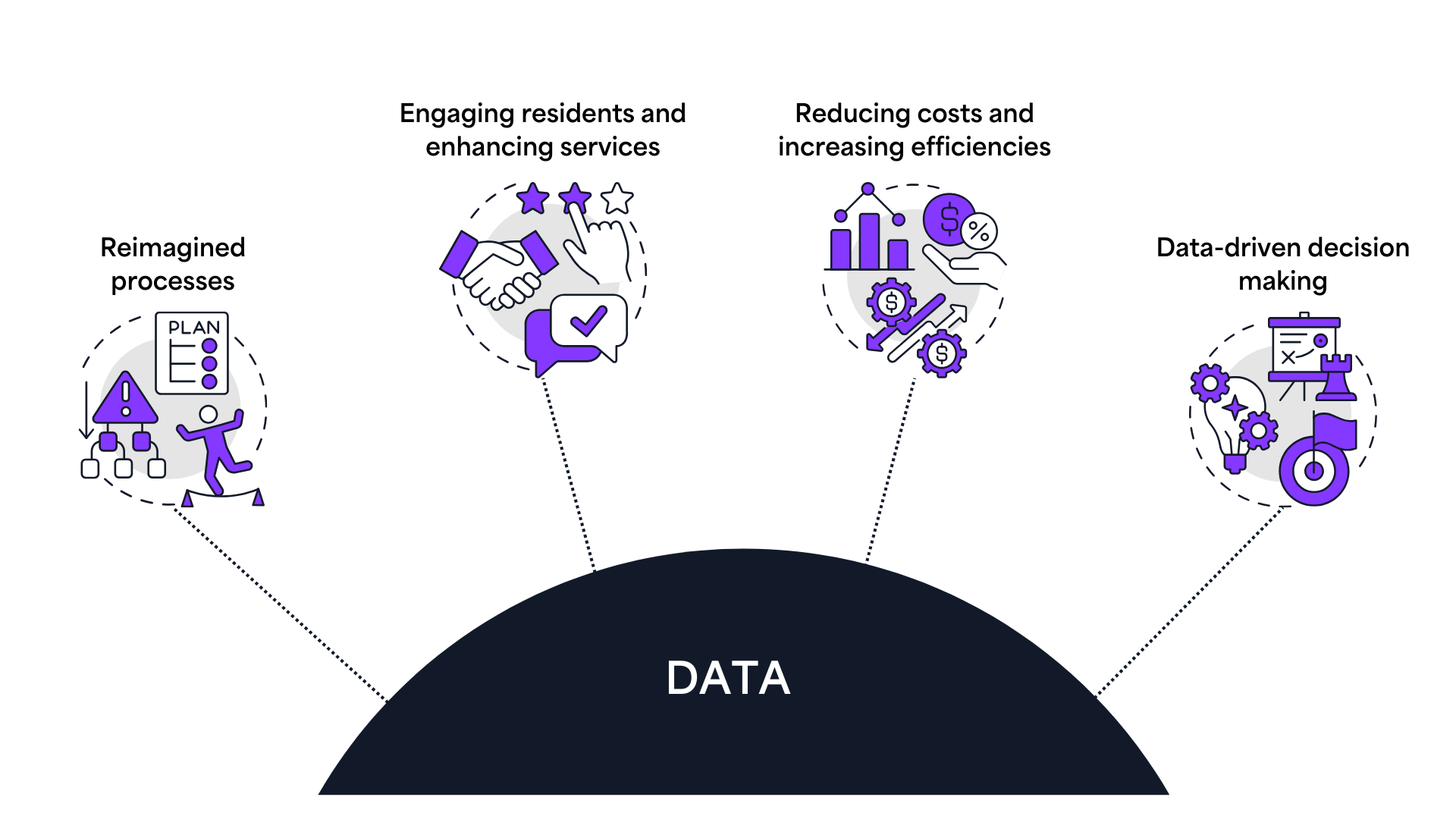
Building an Analytics Center of Excellence
Building a data-driven organization starts with embarking on a journey toward analytical maturity. The concept was originally established by authors Thomas Davenport and Jeanne Harris in their book, Competing on Analytics: The New Science of Winning. We took what they created and developed our own five-step process to help organizations build their data analytics programs, ultimately culminating in establishing an Analytics Center of Excellence (CoE).
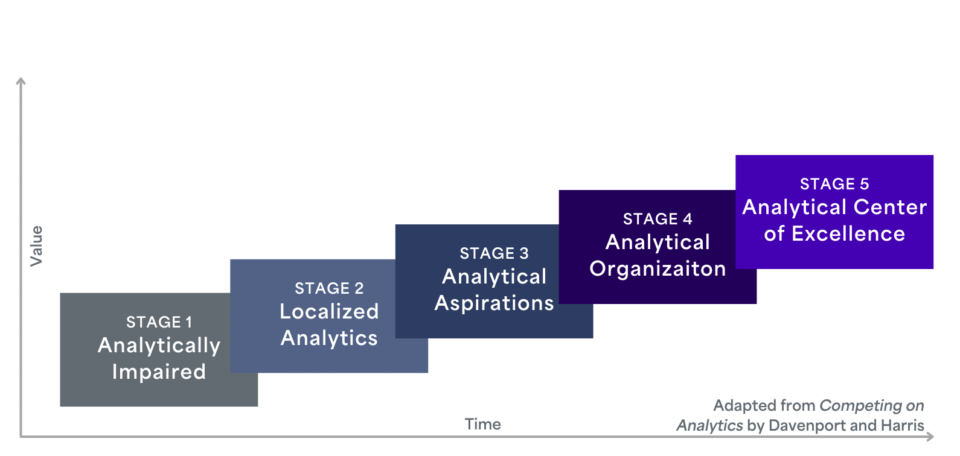
The above model describes the characteristics of an organization at each of the five stages of analytical maturity and provides a common framework for stakeholders to discuss current capabilities, challenges, and objectives. With each increasing stage of maturity, your organization can expect a higher level of business value and return on investment from your analytics efforts.
Organizations begin fresh at stage one, make incremental steps by dabbling in localized analytics in stage two, further their commitments in stage three, and truly broaden their analytical capabilities in stages four and five. They can start small and use incremental successes to affect greater change until the entire organization is analytically mature. Eventually, many agencies will reach the CoE stage, at which point they have dedicated teams of data analysis experts in charge of collecting and sharing benchmark data.
The dimensions of analytical maturity
To move through the stages of analytical maturity, your organization will develop competences across four dimensions of analytical maturity:
- Data: Establishing data quality, governance, modeling, and management.
- Technology: Providing a scalable and secure enterprise analytics platform with processes for easy application development.
- Organization: Training, development of a long-term vision, and consistent leadership support.
- Processes: Best practices are shared across your organization, clear roles and responsibilities are defined.
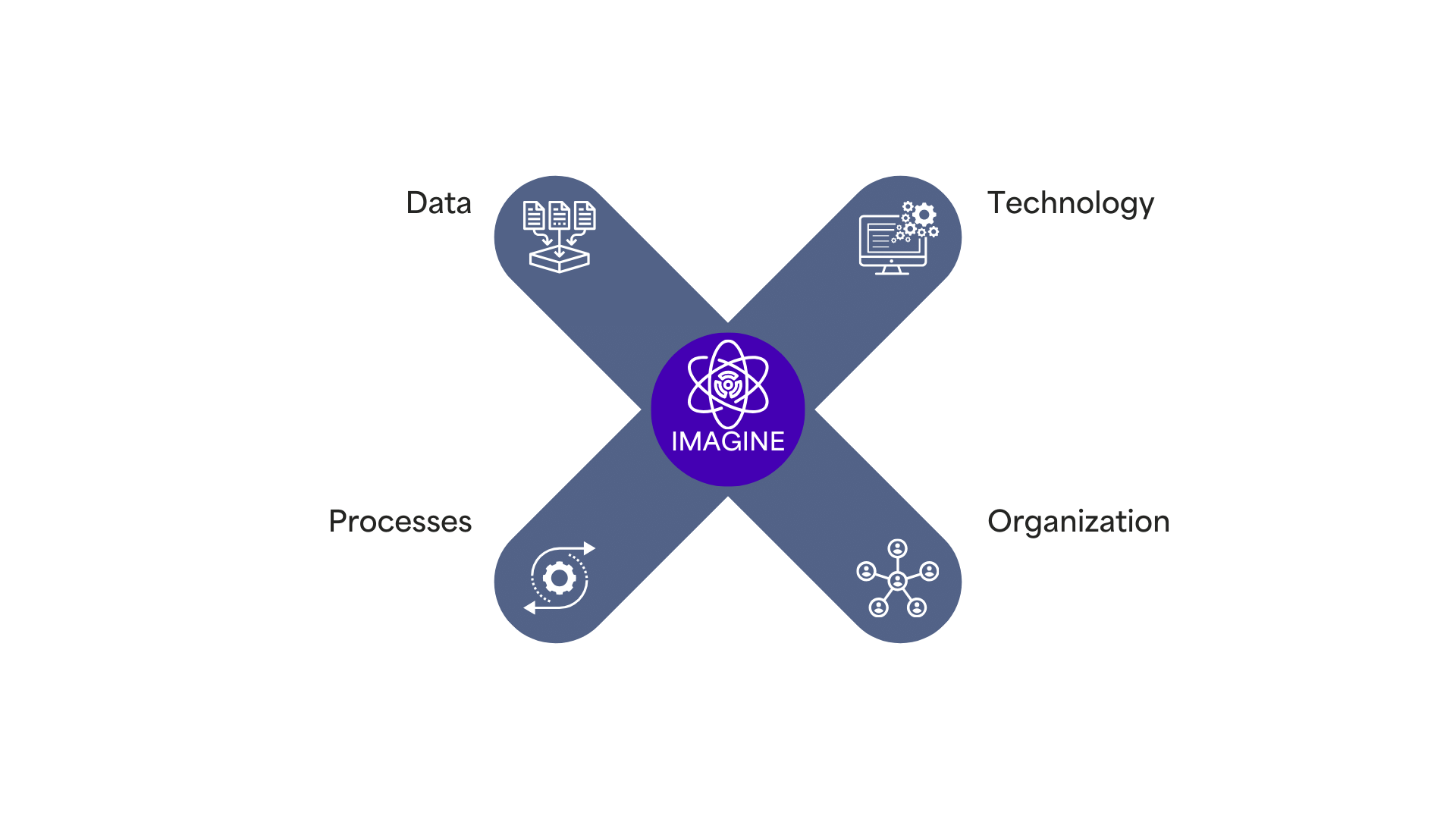
Each of these dimensions is dependent upon the other, and organizations need to advance their data analytics capabilities within all of these phases if they hope to reach analytical maturity. A mature, data-driven organization has the right combination of data, processes, and leadership, as well as the underlying technology to enable fact-based decision-making.
Assessment and Roadmap
To fully leverage the maturity model, it’s important to establish a baseline through an Analytics Maturity Assessment. Voyatek conducts a comprehensive assessment to score the initial maturity stage of your organization in each of the four dimensions. The assessment includes stakeholder interviews plus a review of current processes, policies, and technology.
We evaluate the gaps between the current and future state, then build a roadmap that plots out the best path to analytics maturity. The roadmap takes into consideration the value, timing, level of effort, resource availability and skills, constraints, organizational priorities, and interdependencies.
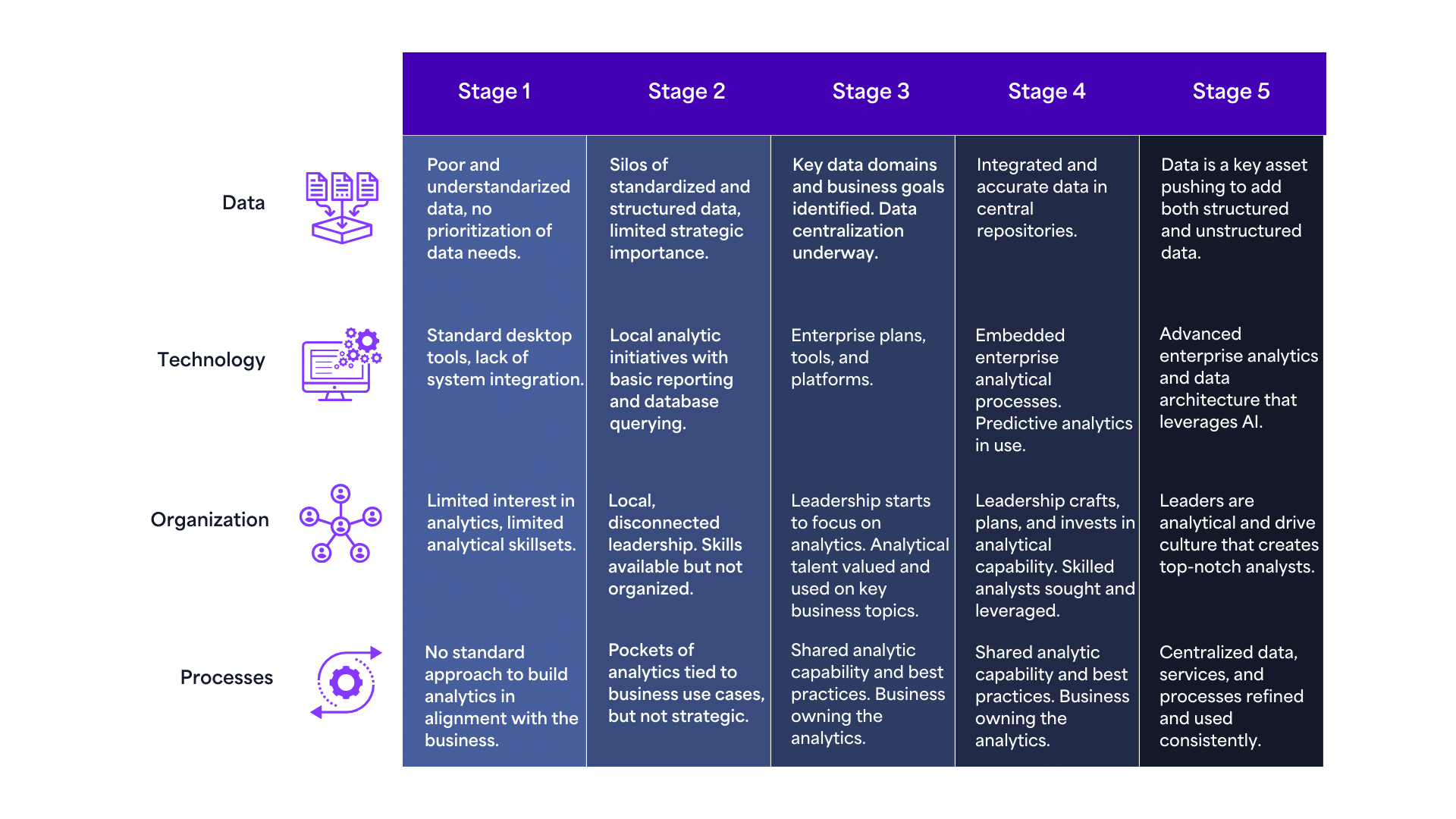
Building Momentum
Once the baseline is established and roadmap is finalized, it’s time to begin the analytics maturity journey. To ensure long-term success of your analytics program, it’s imperative to show results as soon as possible — we call this the Quick Win. A Quick Win will build confidence for the analytics program within your organization and ultimately drive user adoption.
We start by finding a high-value use case and working closely with business users to align expectations and begin a rapid prototyping process. In parallel, we identify the next use case and create a roadmap for the next phase of the project.
Our approach employs design thinking and Agile delivery to show business value early and often. At the highest level, our process is broken up into the following four phases:
- Plan: Design thinking guides the selection of the analytical focus areas that will provide the best value and impact.
- Pilot: A representative problem is defined, the solution brainstormed, and a prototype solution developed.
- Project: The broader solution is implemented via an Agile, iterative cycle that includes continuous improvement based on feedback from focus groups and stakeholders.
- Program: The final phase focuses on increasing your organization’s level of data-driven maturity. Your return on investment is fulfilled as enterprise capabilities that relate to the analytics program and support your strategies, processes, and technologies are launched.
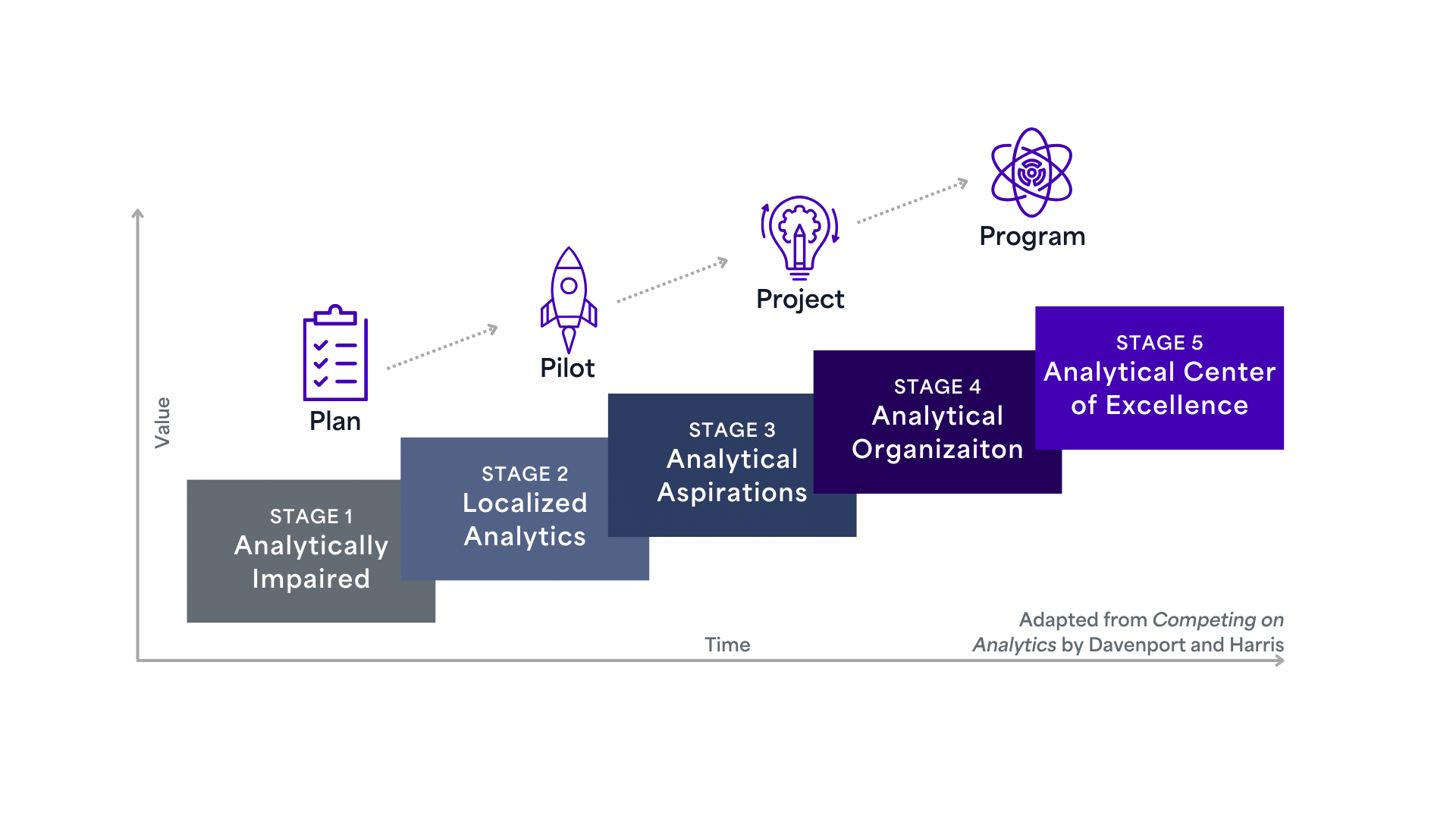
Moving Forward
As organizations become more analytically mature, doors and opportunities open up and teams can begin thinking about ways to use their newfound knowledge to greater affect. But it’s important that agencies strive to continuously improve their data analytics efforts and always ask, “What’s next?” What new projects can we tackle? How can we use data even more effectively? How can we continue to improve? How can we become more intelligent, and use that intelligence to help our operations?
Some organizations may never end up reaching the end of the maturity journey, and that’s OK. Even getting to Stage 4 and becoming an “Analytical Organization” is a phenomenal achievement. Ultimately, the goal should be to reach a point where the organization is able to experiment with new technologies, explore new methods of information sharing, and discover new data-driven insights.
The important thing is understanding what the journey to analytics maturity entails, including the signposts to look out for and the pathways to take along the road. Agencies that set out on this road will be able to make more informed decisions that can reduce costs, improve efficiencies, increase citizen engagement, and deliver better services to their citizens.

